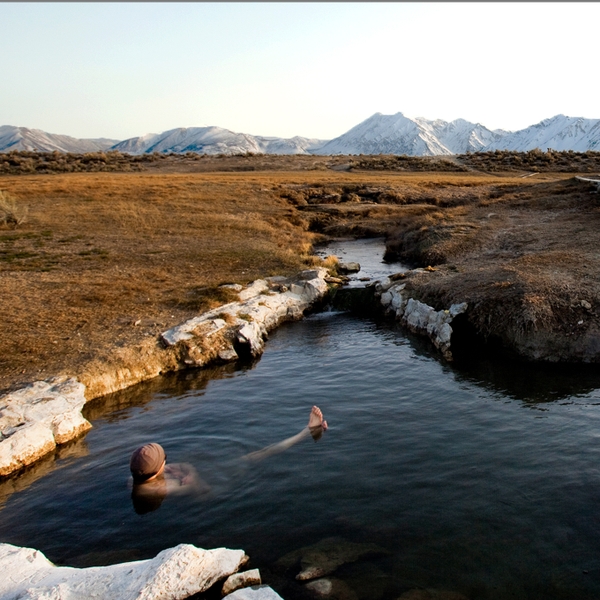The Love and Madness of Hot Springs in the West
Both the world-weary and stoked-on-life congregate at these wild outposts—all seeking the same euphoric joy, communality, and escapism
New perk: Easily find new routes and hidden gems, upcoming running events, and more near you. Your weekly Local Running Newsletter has everything you need to lace up! .
The East Coast may have many��things—Pat’s cheesesteaks, Lady Liberty, the Appalachian Trail—but one thing it mostly lacks are hot springs, which is unfortunate, worthy of pity even, because lounging in a natural spring in your birthday suit, in the middle of the wilderness, in subzero temperatures, is one of life’s finest and most surprising joys.
The fact that clean, perfectly warm water slithers its way up from the dark morass of lava, crust, and bedrock thousands of feet below and into the western daylight is nothing short of miraculous. Hence the belief��that such��waters have healing properties. And they do, but not in the ways you might think.
Many��studies have heralded the mental health benefits of submerging yourself in cold water, which creates a defense response that releases the stress hormone cortisol from the body and pumps endorphins, the happy hormone, to the brain. I believe the inverse is just as effective (and much more pleasant)—that warm water sprouting from the bowels of the earth and slicking every millimeter of your body accelerates the feeling of being alive, a feeling, no doubt, resulting from dilated blood vessels, increased blood flow, and the benefit this “flush” has on our nervous system and other systems of the body.
To hot springs we pilgrimage for a lot of��reasons. A first date. A post-hike soak. To stargaze. Or to people-watch, because hot springs attract a certain breed of character. Two weeks ago, at a popular local pool near my hometown of Carbondale, Colorado, 30 feet off a busy road and in plain sight��was a man buck naked, inverted in a headstand, his��legs spread in a yoga pose. What were the��responses of most folks? “Well, of course.” “Good for him.” “Brave soul.”
On road trips, a four-hour detour is nothing if it means visiting a good spring. If a road trip is an endurance event marked by open skies, marathon drives up mountain passes, and long stretches of deserted highways with screaming kids in the back seat, hot springs are the aid stations. They personalize the land��and act as ecological memories we can take with us. Of each one I’ve been to, I remember the shape of the pools, the color of the water, the smell of the sulfur, the wet��moss growing��on the surrounding stones, and, of course, the people.
Hot springs are equal parts cultural and natural phenomenons of the western landscape and, as such, we need to appreciate and protect their fragile existence.




